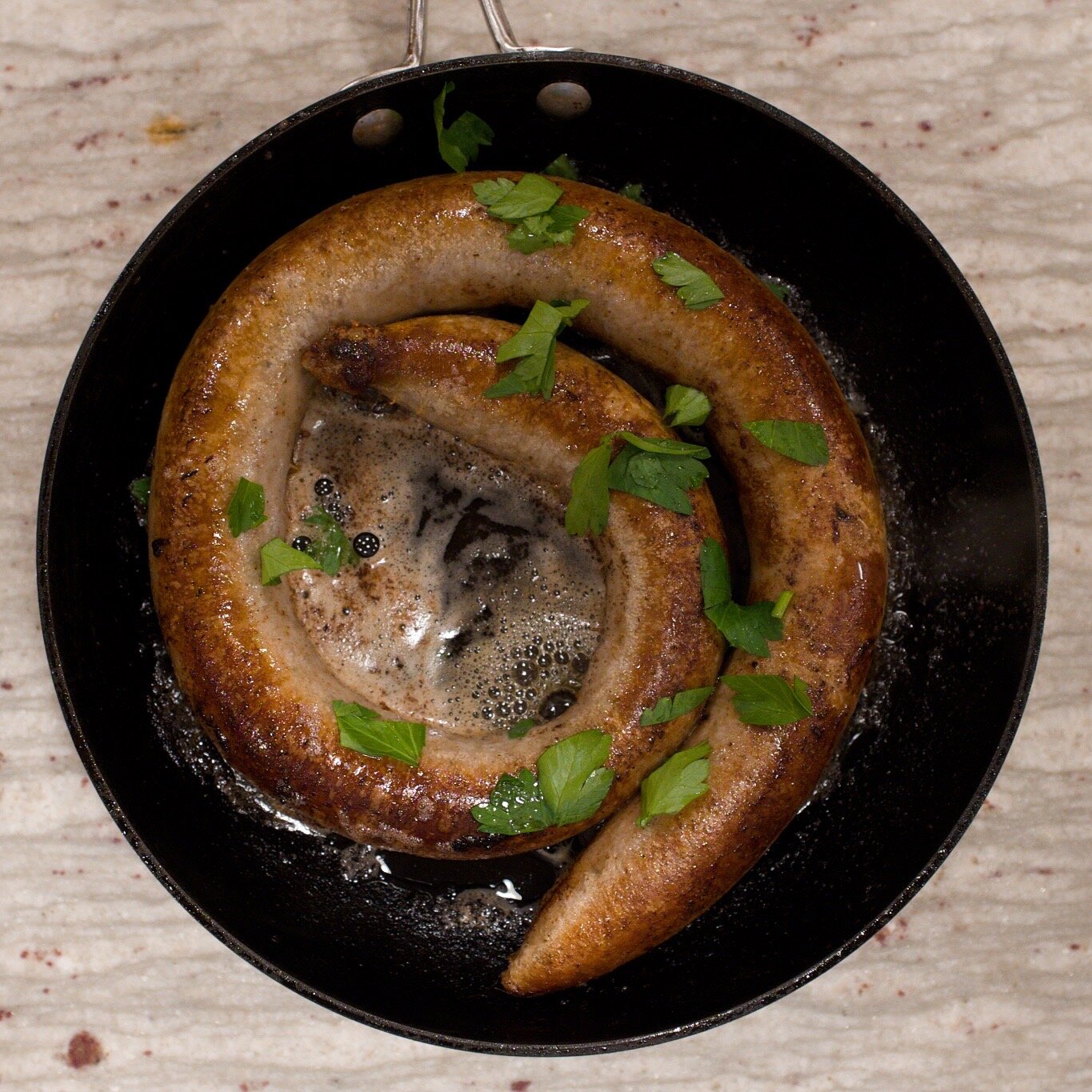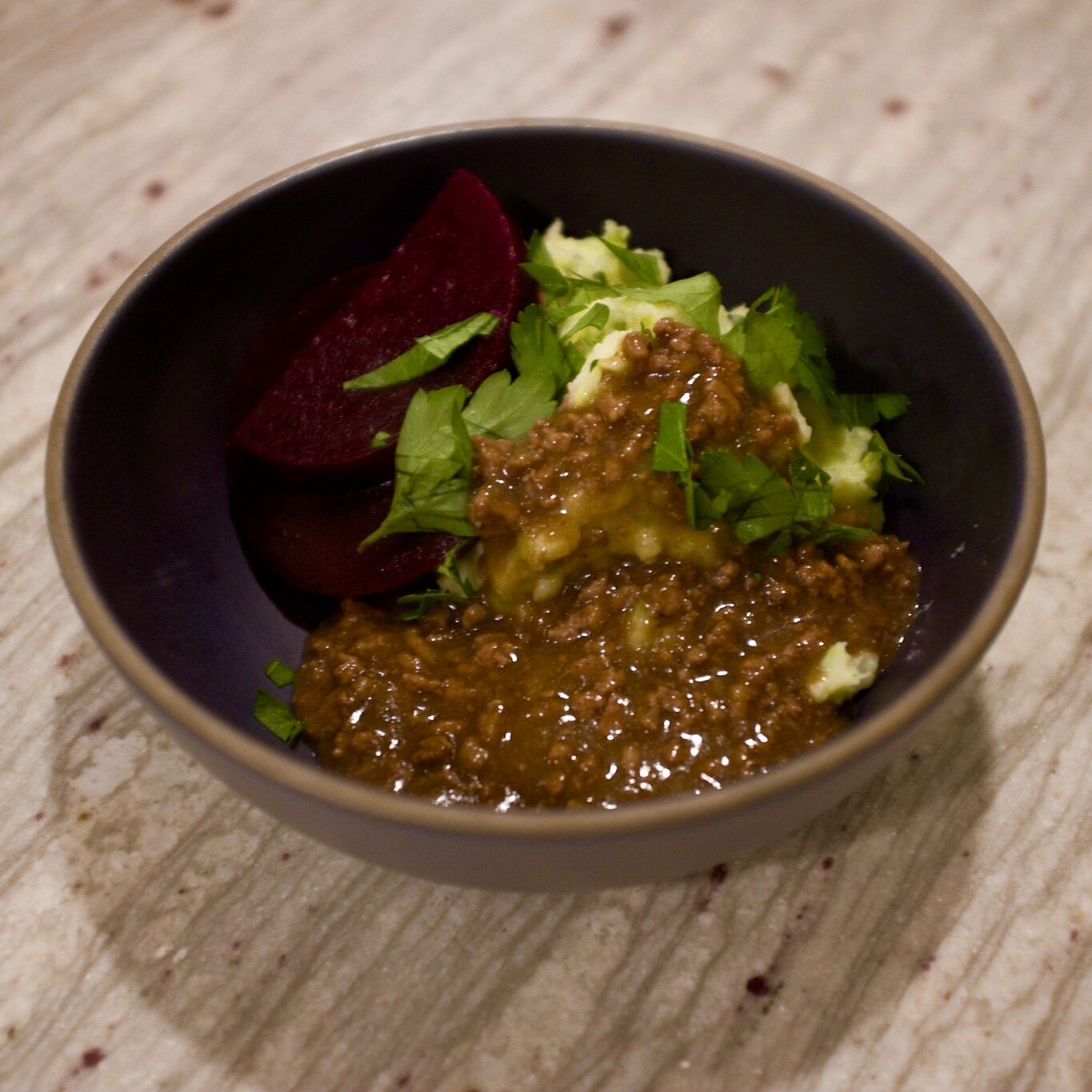Green Pepper Sauce
This green pepper sauce is a tasty but spicy sauce that pairs well with beef. You often get this type of sauce at steakhouses, and this is one of my favorites. In Denmark I’d never made it from scratch, I would just buy the Knorr powder version. But of course the real deal is so much better, so much worth the time and effort. I like that you can make the sauce-base well in advance, you can even freeze it.
This year we had green pepper sauce for our New Year’s dinner, and as a sauce loving creature it was front and center on my plate.😂
Serves 6-10.
Ingredients:
1 shallot, chopped
⅛ root celery, diced
1 garlic clove
2 teaspoons green peppercorn in brine (Madagaskar peppercorns), chopped
1 teaspoon butter
1 teaspoon grape seed oil (or another flavorless oil)
50 ml Cognac
250 ml beef stock
200 ml red wine
1 sprig rosemary (leaves only)
3 sprigs of fresh thyme
1 splash of Gastrique ( you can replace this with some sugar and a splash of vinegar)
100 ml heavy whipping cream
salt to taste
2 teaspoons green peppercorn in brine (Madagaskar peppercorns)
Cornstarch - optional, mixed in cold for thickening
Gastrique (Adapted from Bobby Flay)
1/4 cup (80g) honey
1/2 cup (125ml) apple cider vinegar
Directions:
Gastrique (Adapted from Bobby Flay)
Heat the honey in a small saucepan over medium-low heat for 5 minutes, until it becomes deep golden brown. Add the vinegar and continue to cook, swirling the pan a few times - do not use a spoon. Cook it for about 15 minutes, until the honey/caramel is incorporated in the vinegar, and the gastrique has thickened to the consistency of thin maple syrup. Remove from heat. Keep the gastrique in a sealed sterilized bottle in the refrigerator, it will keep for months.
Sauce:
Sauté onions, celery root, garlic and the chopped peppercorns until the onions are translucent. Remove saucepan from the heat, move the pan away from fan, actually do not have lamps or any other things above it. Pour in the cognac into the pan swirl it round, and standing at a safe distance from the pan, ignite it with a long match or lighter. Gently swirl/stir your now-flaming pan to evenly distribute the alcohol. Let cook until the flames disappear, and the alcohol vapor burns off by itself in a few seconds. Add the beef stock, red wine, rosemary, and thyme. Let the sauce simmer for at least 30 minutes. Strain the now sauce-base through a sieve set over saucepan, pressing firmly on solids, getting all the good flavors out. Reduce the sauce-base to about half, you are aiming for a concentrated base. (All this can be made in advance).
Add cream, whole peppercorns and season the sauce with salt and gastrique. If you like a slightly thicker sauce, you can thicken it with some cornstarch dispensed in cold water. Serve the sauce with a nice steak or roast.
Enjoy!






